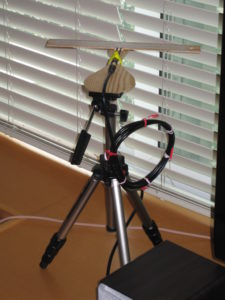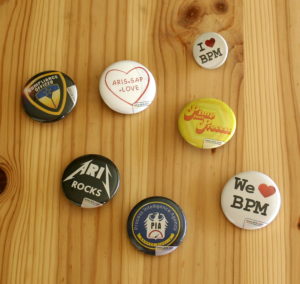I’ve been running a mobile device experiment for the past six weeks: since my Blackberry three-year contract ran out, I switched to using a standard mobile phone (with a greatly reduced monthly fee) plus an iPod Touch. I was lucky enough to score a free iPod Touch — BEA’s last marketing blowout at their conference before being absorbed by Oracle was to give one to every attendee — so this experiment costs me nothing to try out. Those who know me were aghast at seeing me without the trusty Blackberry at my side, where it has been for the past eight years, but I wanted to try out this combo for a couple of reasons.
First, there are so many new devices out lately and a number of new ones on the rise, that I want to reassess my Blackberry bigotry. Specifically, I’m thinking about switching to an iPhone and need to be sure that the non-phone functionality of the iPhone works for me (for those of you unfamiliar with the iPod Touch, is pretty much exactly like an iPhone except no phone, no camera, and no paid plan required from your mobile carrier since it only connects via wifi).
Second, Canada is about to see a rash of new entrants into the mobile carrier space in early spring of 2009, and I didn’t want to be locked into another contract with Rogers when those options became available. That means that I’ll likely stick with this configuration until I know what the new offerings will be: data plans have certainly come down in price here, but I’m also looking for a carrier that will provide me with better-priced US roaming, which is currently about $2/minute with Rogers.
Results so far:
Voice: I continue to use almost none of my voice minutes on the mobile phone, except for a couple of calls when I’m traveling. I’m just not big on talking on the phone.
Texting: I still do some text messaging from my regular mobile phone, but using a standard phone keyboard — even with predictive typing — is so much slower than the Blackberry that I’ve reduced that quite a bit.
Connectivity: Since the iPod Touch connects to any wifi that’s around, I use it around my home/office, at conferences where there’s wifi, and now in every Starbucks in Toronto where I can use my Bell Internet account (or a Starbucks card) to login to the Bell hotspot. A number of airports also have free wifi, allowing me to step off the plane, search for wifi, connect and check my email without breaking stride. Although I don’t have the uninterrupted service that I enjoyed with the Blackberry (which would, of course, be replicated on a full iPhone), I am finding that this is sufficient for most of my needs.
Typing: The touch keyboard on the iPod Touch (same as the iPhone) sucks when compared to the Blackberry: I can touch-type with my thumbs on a Blackberry, making it a very real email composition platform; on the iPod, I’m much more likely to send only a brief reply, if anything at all, and wait to get to my laptop before sending any substantial messages.
Reading email: The email reading experience is great on the iPod, certainly much better than the older Blackberry that I had. I use both Gmail and Google Apps mail, and the IMAP client works well with both, meaning that everything that I do on the iPod is reflected in my email online, and therefore in my desktop IMAP client. [The IMAP client on the Blackberry was always slow and a bit flaky for me, meaning that I used to do POP email there, then have to replicate what I did back on my desktop since I used the Blackberry Internet service, not a corporate server. Obviously, if you’re on a corporate Blackberry server, that experience will differ.]
Surfing: Amazingly good on the small screen, since zooming and rotating are a breeze. No Flash support, which is a bit of a hassle on some sites, but otherwise fairly widespread support. Many sites (including this blog) offer an iPhone-optimized version of their site that auto-detects that you’re on the platform and switches over.
Feed reading: Excellent with Google Reader; since I use Google Reader from my laptop as well, that means that everything read anywhere stays synced up.
Applications: I never found a lot of Blackberry applications that really worked for me, and with no central clearinghouse for them, they were hard to find. The iPod Touch, on the other hand, can run most of the applications available for the iPhone, allowing me to test out the full experience. No VOIP calling, of course, but plenty of useful stuff:
- Red Rocket, one of only two paid applications that I use, which has all of the Toronto transit maps, routes and schedules. Very handy when I’m waiting at a streetcar stop wondering whether to wait for the next car or hail a taxi.
- SplashID, the other paid app, which holds confidential information such as credit card numbers and PINs in a secure encrypted format.
- Files lite, the free (but completely adequate) version of a file transfer/storage application that allows me to copy files from my PC to the iPod in a variety of formats: PDF, Word, PowerPoint, etc. More than storage, I can actually view the files on the iPod, making this a great place for a quick reference library.
- Instapaper (again, the free version), which allows me to bookmark web pages either on the iPod or my PC, then sync them up to the iPod for offline viewing. Good if I want to review something on a plane or when I’m away from wifi access, but don’t want to print it. The rendering of the page isn’t perfect, but everything that I’ve tried is completely readable.
- Stanza e-book reader, with a large selection of freely downloadable books, and a desktop application so that you can covert your own files into e-book format for transferring to and reading on the iPod. The reader is quite usable: the text is large enough, and although there’s not a lot of text on each page, flipping to the next page is so fast that it’s a pretty seamless experience.
Battery life: Not great, but then I’m using it for a lot of internet access so hard to compare with the Blackberry where I did less surfing since it wasn’t required for reading email. With a Blackberry, you have the option of carrying an extra charged battery and swapping it out, and it also holds a charge for several days if you’re not talking much.
In summary, I find the phone/iPod combo pretty useful, especially considering that most of my travel is done for the year so I’ll be around my office (where there’s wifi) or at clients in downtown Toronto (where there’s Starbucks wifi on every street corner); I can certainly last out for a few months with this combo to break the Crackberry addiction and consider some alternatives. The keyboard is certainly a huge deterrent to moving to the iPhone (if it weren’t, I would have been tempted to switch already), as well as the battery life issue.




